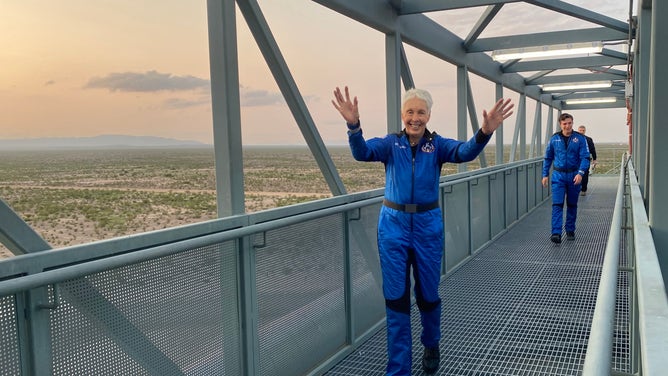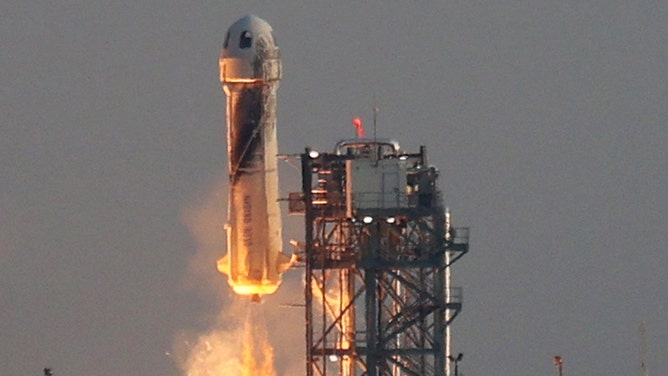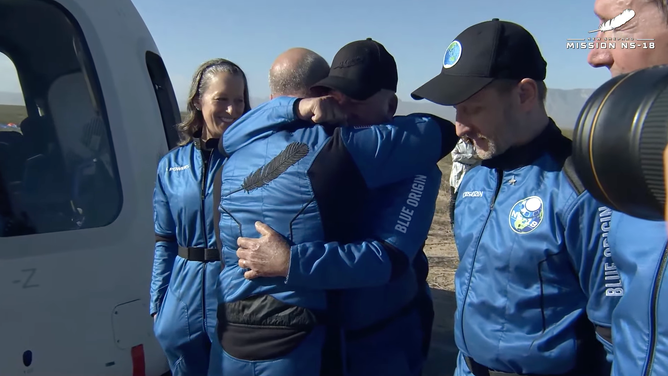7 stellar achievements in spaceflight from 2021 worth celebrating
2021 highlights: Flying a helicopter on Mars, astronaut launches and NASA spacecraft 'touches' the sun
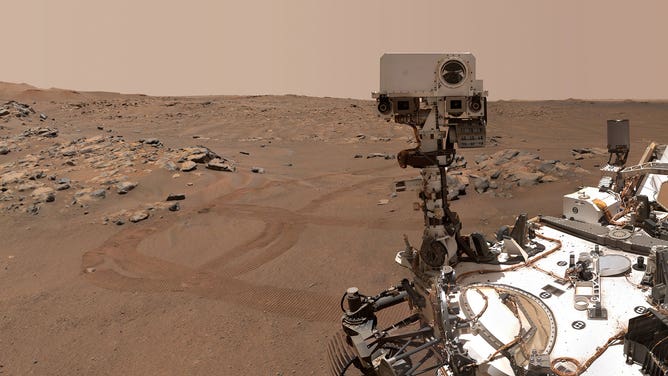
NASA’s Perseverance Mars rover took this selfie over a rock nicknamed "Rochette," on Sept. 10, 2021, the 198th Martian day, or sol of the mission. (Image: NASA/JPL-Caltech/MSSS)
Achievements in science and spaceflight in 2021 offered a glimpse of hope while the pandemic continued to upend lives across the globe for a second year.
Throughout 2021, 12 people launched to space from Florida, a tiny helicopter flew on Mars, and aviation pioneer Wally Funk finally got her chance to go to space after waiting for 60 years.
The cherry on top in spaceflight for 2021 was the long-awaited launch of the powerful James Webb Space Telescope, blasting off on Christmas morning.
In no particular order, here's a look back at a few highlights in space exploration from 2021.
Mars Perseverance rover lands, and NASA flies a helicopter on Mars
NASA’s Mars Perseverance "Percy" rover launched from Florida in July 2020 and successfully landed on the Red Planet in February 2021.
Percy has been exploring the Jezero Crater on Mars now for 11 months. The rover will take samples of Martian dirt and rock that will be collected by another robotic mission and brought back to Earth for analysis. While Percy might look like NASA’s Curiosity rover on Mars, the newer robot has a whole different suite of science instruments, including the first microphones to record sounds on Mars.
The mission also marked the first helicopter flight on another world. NASA’s tiny Ingenuity helicopter hitched a ride with Percy and conducted 18 short flights on Mars. The small copter was a test mission, and each flight beyond the first far exceeded expectations.
With its most recent flight in December, Ingenuity pushed its total flight time above 30 minutes, covering a distance of 2.2 miles on Mars.
More astronaut launches from Florida
SpaceX Crew-3 launches from Kennedy Space Center
SpaceX Crew-3 launches from Kennedy Space Center on its way to the International Space Station.
While 2020 marked the return of astronaut launches from American soil, 2021 saw more regular human spaceflights from Kennedy Space Center.
As part of NASA’s Commercial Crew Program, SpaceX had now flown four sets of NASA, European and Japanese astronauts to and from the International Space Station. Two of those crews launched this year, and Crew-1 returned home in May after launching last year. The most recent astronauts of the Crew-3 mission will return home in Spring 2022.
The commercial program has marked a new era in human spaceflight that looks very different from the space shuttle program. Astronauts ride in Teslas to the launchpad at Kennedy Space Center, and the sleek black-and-white Dragon ship is fully automated with touchscreens.
‘Touching’ the sun
One of the most read space stories on FOX Weather this year was about the Parker Solar Probe. NASA revealed the spacecraft had officially "touched the sun" when it blasted through the sun's upper atmosphere, known as the corona.
Parker Solar Probe launched from Cape Canaveral, Florida, in 2018 and took three years to reach the sun's atmosphere. This is the closest a spacecraft has even been to our solar system's star.
NASA associate administrator for the Science Mission Directorate, Dr. Thomas Zurbuchen, said this is "a truly remarkable feat."
Watch the video above to see what it looked like outside the "window" as the probe flew through the sun's upper atmosphere.
Asteroid missions

Illustration of NASA’s DART spacecraft and the Italian Space Agency’s (ASI) LICIACube prior to impact at the Didymos binary system. Credit: NASA/Johns Hopkins APL/Steve Gribben
(NASA)
NASA launched not one but two robotic missions to asteroids this year.
Lucy, NASA’s first asteroid mission this year, launched on a United Launch Alliance Atlas V rocket from Cape Canaveral in October. The spacecraft was designed to study the Trojan asteroids closely associated with Jupiter. The mission was named by human’s ancestor "Lucy" because the asteroids it will explore could help revolutionize our knowledge of how planets and the solar system formed.
Since launching, Lucy hit a road bump on its journey to the asteroid when one of its solar wings did not fully open in space. According to NASA, Despite this setback, the "spacecraft is safe, stable, and collecting plenty of power."
Then in November, SpaceX launched NASA’s DART spacecraft on the first mission to test out a planetary defense plan.
DART, which stands for double-asteroid redirect test, is part of a global effort to protect Earth from potentially hazardous asteroids. NASA plans to use DART as a battering ram to crash into a near-Earth asteroid and see if the kinetic energy can change its direction by a tiny amount.
The $330 million mission consists of one spacecraft and an Italian Space Agency CubeSat called LICIACube. DART's most important asset is its mass which NASA plans to use to smash into the small moonlet Dimorphos orbiting a larger 780-meter asteroid called Didymos.
DART’s final moments will happen in Fall 2022 when it intentionally smashes into Dimorphos. Scientists on Earth should observe the asteroid pair and determine if the test worked.
Launch of the James Webb Space Telescope
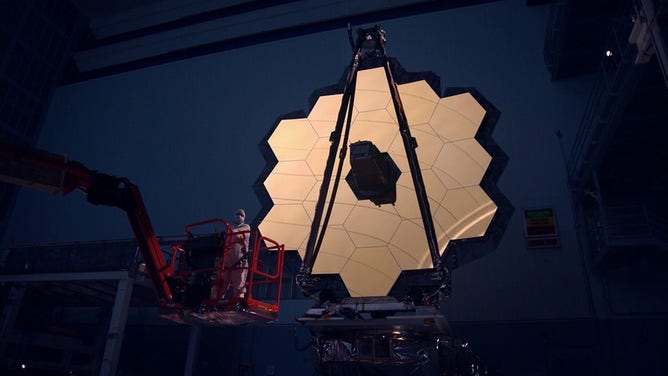
Shown here, the James Webb Space Telescope primary mirror illuminated in a dark cleanroom. (Image: NASA Goddard Space Flight Center)
(NASA)
Squeaking in at the end of the year, the long-awaited -- and much delayed -- launch of the James Webb Space Telescope happened on Christmas morning from Europe’s Spaceport in French Guiana. After a flawless launch, Webb is now headed to its final destination, a million miles from Earth, where it will peer into the depths of the cosmos from 13.5 billion years ago.
The first images from Webb won’t be coming in until mid-way through 2022, which is something to look forward to next year. Hundreds of scientists are waiting to use Webb's observations for their research.
Artemis moon landing comes into focus
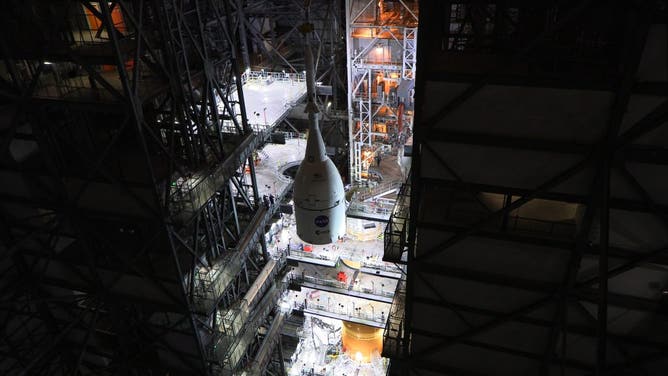
The Orion spacecraft is stacked on top of the SLS rocket inside the VAB. (Photo Credit: NASA/Chad Siwik)
As NASA prepares to send astronauts back to the lunar surface for the first time in 50 years, all the pieces of its moon rocket known are finally in one place.
The Space Launch System rocket is fully assembled in the Vehicle Assembly Building at NASA's Kennedy Space Center in Florida. In October, the last piece of the Artemis-1 mission rocket was stacked, and then the Orion spacecraft was added on top. The rocket and spacecraft are undergoing testing before the hardware is rolled out to the launch pad next year for liftoff.
The Artemis-1 mission will test the SLS and Orion when it launches, sending the spacecraft around the moon and back. NASA plans to land humans back on the moon by 2025.
Meanwhile, NASA selected SpaceX's Starship spaceship to be the first human moon landing system for the Artemis III mission. The astronauts will launch on SLS and take the Starship down to the lunar surface.
Elon Musk's company SpaceX continued to progress on Starship development at its facility in Boca Chica, Texas, including the first successful test landing.
First all-civilian spaceflight and space tourism
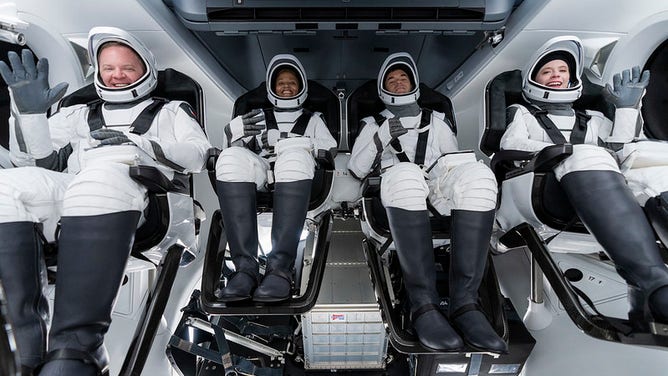
The Inspiration4 crew inside the Crew Dragon spacecraft. (Image: SpaceX)
An all-civilian crew launched this year on a three-day journey to orbit the Earth for the first time. Billionaire Jared Isaacman and three other civilians launched on a SpaceX Crew Dragon from Kennedy Space Center in September, marking the first time a spacecraft without a NASA astronaut has launched from Florida.
Dragon is a fully automated spacecraft, but the four crew members -- Isaacman, St. Jude Physicians Assistant Hayley Arceneaux, engineer Chris Sembroski and educator Dr. Sian Proctor – underwent training at SpaceX’s headquarters in California before their launch. After three days orbiting the Earth, the four splashed down off Florida's coast.
Next year, SpaceX will partner with Axiom Space to fly paying customers to the International Space Station.
This year marked another type of firsts in spaceflight as Virgin Galactic, Blue Origin and SpaceX launched civilians to space.
Virgin Galactic founder Sir Richard Branson rode to the edge of space in his company’s SpaceShipTwo spaceplane experiencing weightlessness for several minutes in July. Just days later, Blue Origin founder and former Amazon CEO Jeff Bezos launched on his company’s New Shepard rocket in July along with three other passengers.
One of the guests invited by Bezos on this flight was 82-year-old aviation pioneer Wally Funk. She was among the women known as the Mercury 13 who underwent privately-funded astronaut testing but never became astronauts.
Both Virgin Galactic and Blue Origin plan to fly paying customers to suborbital space regularly. Blue Origin’s New Shepard had three spaceflights with space tourists this year.


